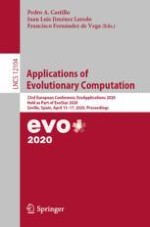2020 | OriginalPaper | Buchkapitel
Ant-based Neural Topology Search (ANTS) for Optimizing Recurrent Networks
verfasst von : AbdElRahman ElSaid, Alexander G. Ororbia, Travis J. Desell
Erschienen in: Applications of Evolutionary Computation
Aktivieren Sie unsere intelligente Suche, um passende Fachinhalte oder Patente zu finden.
Wählen Sie Textabschnitte aus um mit Künstlicher Intelligenz passenden Patente zu finden. powered by
Markieren Sie Textabschnitte, um KI-gestützt weitere passende Inhalte zu finden. powered by
